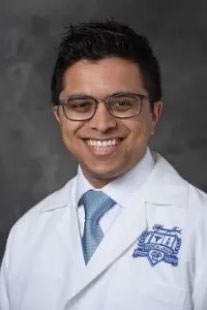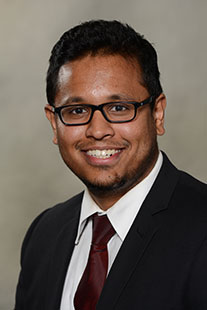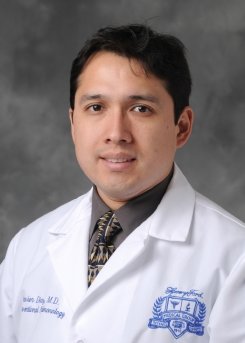Impact of a Multimodal Simulation-based Curriculum on Endobronchial Ultrasound Skills
Durairajan, N., Venkat, D., Soubani, A., Jinjuvadia, C., Mukadam, Z., Lee, S. J., & Sankari, A. (2022). Impact of a Multimodal Simulation-based Curriculum on Endobronchial Ultrasound Skills. ATS scholar, 3(2), 258-269.
Summary
Throughout fellowship for Pulmonary and Critical Care, fellows will participate in numerous procedures in different settings. One of the most common procedures performed during training is EBUS-TBNA bronchoscopy. EBUS-TBNA offers a less invasive, and cost-savings alternative to mediastinoscopy for staging non-small cell lung cancer. While there are validated assessment tools to evaluate competency in EBUS-TBNA, there is no universal criteria on how to incorporate them to the training of EBUS-TBNA amongst graduating trainees. The authors set out to improve their EBUS-TBNA training by implementing a multimodal curriculum, with an emphasis on simulation-based training. Albeit a small sample size, the authors showed that a multimodal curriculum can enhance the knowledge, confidence, and overall performance of EBUS-TBNA for Pulmonary fellows.
Trainee Take Away
This article was very thought provoking, and of particular interest to me as a current Interventional Pulmonology fellow. In a procedure heavy field, we always "want our hands on the scope". But as the authors showed in the article, there is much to be gained from the didactics reviewing evidence-based practices, problem-based learning to facilitate discussion amongst the trainees with the faculty, as well as the simulation. Then being able to "put it all together" in the procedure itself, and management based on the subsequent results. As I near the end of my training and get ready to transition into my role as teaching faculty that will be working with Pulmonary fellows, this article really brought to light the importance of different ways of learning for trainees. I look forward to using what I learned from this article and implementing it into my teaching style.
Interview
DK: This study was done in 2nd and 3rd year fellows. In which part of the training do you think it would be the best time to apply this curriculum on the trainee? Is there any specific prerequisite that you consider necessary before this training?
ND: That is an excellent question. Currently, there is a lot of variability in every training program nationally and internationally regarding how to and when to initiate formal EBUS-TBNA training for pulmonary fellows. At our training institution, first-year fellows focus on learning and performing basic/diagnostic bronchoscopies, while the 2nd/3rd year fellows perform “advanced” bronchoscopies such as EBUS-TBNA and navigation bronchoscopy under faculty supervision. Our EBUS-TBNA curriculum was designed for novice EBUS-TBNA trainees-the only prerequisite was for the participants to achieve competency with basic bronchoscopy skills. This was assessed based on (1) diagnostic bronchoscopy procedure volume and (2) completion of the four required basic bronchoscopy modules in the BRONCH Express™ simulator (created by 3D systems)-which assess basic airway anatomy, trainee scope handling, speed and accuracy of bronchoscope maneuvers.
DK: Was this curriculum implemented in further classes after the study? If so, how is its consistency maintained?
ND: Yes, it has been continued in further classes. Consistency is maintained by having a system in place for “training the trainer". The main preceptor for this curriculum is the designated Clinician-Educator (CE) fellow, who is a 3rd year fellow — selected based on interest in medical education and curriculum development. “Training the trainer” includes didactic reading material to complete, formal assessments by the CE fellow that his/her successor has to pass before stepping into the role, in addition to being mentored by the current CE fellow for 6 months. This ensures there is continuity and consistency, even though there is a new fellow assuming this role every year.
DK: How would you change this curriculum and assessment (if any change is needed) in order to apply it to the learning experience in real patients? Is there any other tool that you would consider using?
ND: We developed our EBUS technical skills assessment tool with the goal of easy extrapolation for real patients. If you look at our 20-step procedure checklist (page 3, appendix B), all 20 steps are important for successful and safe sample acquisition (unless an operator chooses to avoid using suction during TBNA-they can skip steps 12, 13). There is also opportunity for the preceptor to assess trainee performance in lymph node and vascular anatomy identification using the same checklist (page 2, appendix B).
One of the challenges to accurate, unbiased skill assessment in real patients is the possibility that the supervisor/faculty might have to take over the case at times, due to impending/ongoing complications and patient safety. Hence, prior to assessing trainee skills during real cases, the supervising faculty team would need education about minimizing case interruption during TBNA attempts, avoiding intra-procedural variability/preferences (using suction, number of passes/attempts) and efficient feedback techniques to offer trainees. There is some evidence that trainee involvement during EBUS can increase procedural duration, anesthesia dose, and complication rates. This is where simulation training has a lot of advantages, where the trainee can learn, practice and be assessed in a controlled environment, with no risk of patient complications. In real patients, I would also recommend having the assessments done by a separate preceptor, so that the faculty supervising the fellow can focus on the EBUS-TBNA procedure and patient safety. However, this would mean additional personnel being trained and available for assessment during real cases. Finally, there is always some gap in realism with even the highest fidelity simulator/manikin compared to real patients, along with patient-to-patient variability which can make standard assessments challenging at times.
DK: Based on what you learned during this study, what advice would you give a new graduate who is starting as faculty that will be training fellows on EBUS?
ND: Didactic training material has been consistently shown to have lower retention than comprehensive hands-on simulation training. Therefore, incorporating an EBUS-TBNA curriculum using commercially available simulation systems is advantageous to standardize the training for new fellows as outlined in our study. This will require initial “training the trainer” sessions, but it can be done by contacting a center with experience in it and/or working with educational organizations that do workshops on Bronchoscopy simulators. It is also recommended to spend time with your trainees and learn their individual strengths/deficiencies. The one-on-one debrief sessions after each assessment is a critical step for effective training. There are multiple types of learners (self, didactic, hands-on, virtual etc) and the most effective method of training for one trainee might be different to others. Some trainees might just need one session, others might need multiple. Positive reinforcements and earning the trust of the trainees are also key, so that the trainees understand that the purpose of the extra sessions is for their benefit, instead of being punitive or a strain on their already busy fellowship schedule. Finally, the simulator equipment/scope is liable to damage with frequent/unsupervised use by inexperienced users. It is recommended to have a trained simulation lab personnel/preceptor supervise all training/practice sessions.
DK: Where do you see EBUS education and assessment heading in the next 3-5 years? Is there something that you would like to add to this training?
ND: More and more programs are instituting EBUS-TBNA training curriculums for their fellows. This is a major change compared to 10 years ago when EBUS-TBNA training and skills were neither structured nor tracked. I expect increasing roles for simulation and hands-on training, to supplement traditional didactic and apprenticeship models of training. Simulation training is resource intensive, both monetary and personnel. This is a reason why a lot of programs are unable to incorporate this wonderful training tool. However, some bronchoscopy simulators have the ability to incorporate EBUS-TBNA training without additional equipment and it is possible to share one simulator across multiple regional training programs to cut costs. While many training programs incorporate some form of simulation training, standardized training and validated assessments are not universally incorporated, making it challenging to assess their effectiveness accurately. It is very important to use validated curriculums and assessment tools during simulation training before it is transferred to real patients.
Blog Post Author

Daniel Kapadia is the current Interventional Pulmonology fellow at Henry Ford Hospital located in Detroit, Michigan. He completed his Internal Medicine Residency at nearby Wayne State University, and his Pulmonary and Critical Care Fellowship at Henry Ford Hospital. His clinical interests include therapeutic bronchoscopy, bronchoscopic lung volume reduction (BLVR), robotic assisted bronchoscopy, and medical thoracoscopy for pleural disease. Daniel is also very interested in education and GME. He served as Chief Resident, and Chief Fellow. Daniel is working closely with Dr. Diaz on the fellow's curriculum for the Interventional Pulmonology rotation at Henry Ford Hospital. Daniel and his wife Susie live in the Metro Detroit area with their 2 kids. They enjoy going to the Detroit Science Center, local museums, and exploring the food scene in Detroit. Daniel enjoys spending time on the golf course. Following graduation, Daniel will be staying on as faculty at Henry Ford Hospital and will work closely with residents at fellows within their training programs.
Twitter: @DanielKapadia
Article Author

Dr Navin Durairajan is a Pulmonary-Critical Care physician practicing at Terrebonne General Health System in south Louisiana. He did his residency and fellowship at Detroit Medical Center-Wayne State University in Michigan. He was the Clinician-Educator fellow at his fellowship program for 2019-2020. His interests include lung cancer, medical education and quality improvement. He currently lives in south Louisiana with his wife and 2 cats (Jack and Loki). Navin and his wife love the great outdoors and spend usually about 3 months a year traveling. In the last year, they hiked the mountains of Arizona, went canyoneering in Utah and scuba dived off the coast of Kauai.
Twitter: @navin8787
WEAR Mentor

Javier Diaz-Mendoza, MD



